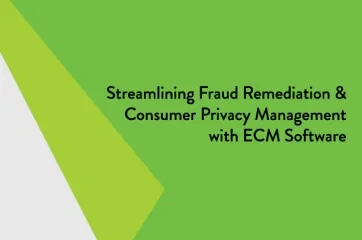Suspicious Activity Monitoring
Suspicious activity monitoring is the procedure of identifying, researching, documenting—and, if necessary, reporting—an account holder’s banking pattern when it indicates possible illegal behavior. This practice is done to both manage a bank or credit union’s risk and comply with regulations.
Examples of suspicious activity include:
- Unusual Large Business Deposits of Cash: Large amounts of cash regularly deposited into an account for a company that is not normally a cash business.
- Personal Accounts with Suspicious Activity: A personal banking account that is established with a small deposit but regularly has large sums of money flowing through it.
- Avoidance of CTR: Multiple deposits in cash, each just below $10,000. This attempts to avoid the need for a currency transaction report, or CTR, to be completed. (The CTR form is designed to deter money laundering and is required when a customer seeks to either deposit or withdraw more than $10,000 in a single transaction.)
How is Suspicious Activity Monitoring Initiated?
The initial burden of suspicious activity monitoring has traditionally fallen on frontline staff at financial institutions. The teller alerts a supervisor or manager, and then an investigation is conducted. In some instances multiple departments may be involved in researching an account. A suspicious activity report (SAR) would then be completed if warranted.
Some banks and credit unions are now also using features in their core software system and other electronic document management systems to delineate parameters that automatically trigger a suspicious activity notification. This is especially important for larger institutions with multiple branches; suspicious activity would otherwise be difficult to pinpoint if transactions were spread across a variety of locations with a number of tellers.
A Bank’s Responsibilities with SARs
Once an SAR is generated, a financial institution is required to file it with the Financial Crimes Enforcement Network (FinCEN) and retain all associated documentation for a five-year period, either as a hard copy or electronically. Auditors will also likely request SAR files, so it is imperative that these records be complete and easily retrievable.
Continue reading about SAR documentation best practices.
Tracking Resources
For more information about bank tracking and management, be sure to check out our extensive resource library with free spreadsheets, whitepapers, and eBooks.
Searching for more banking definitions? Check out our banking definitions page.














